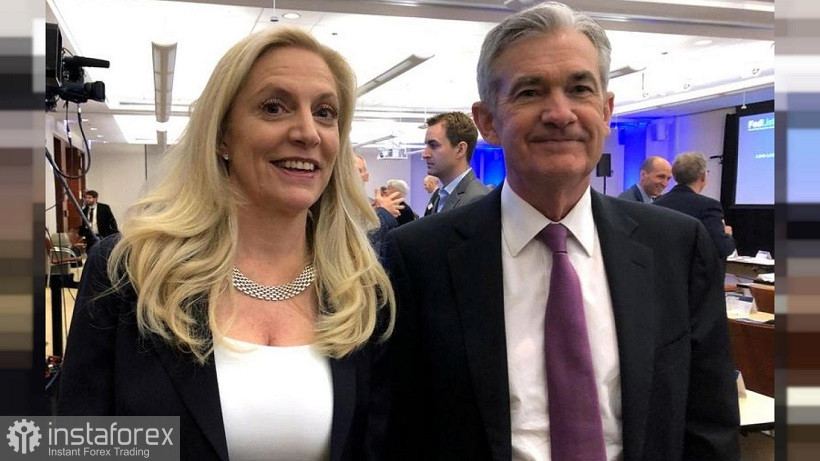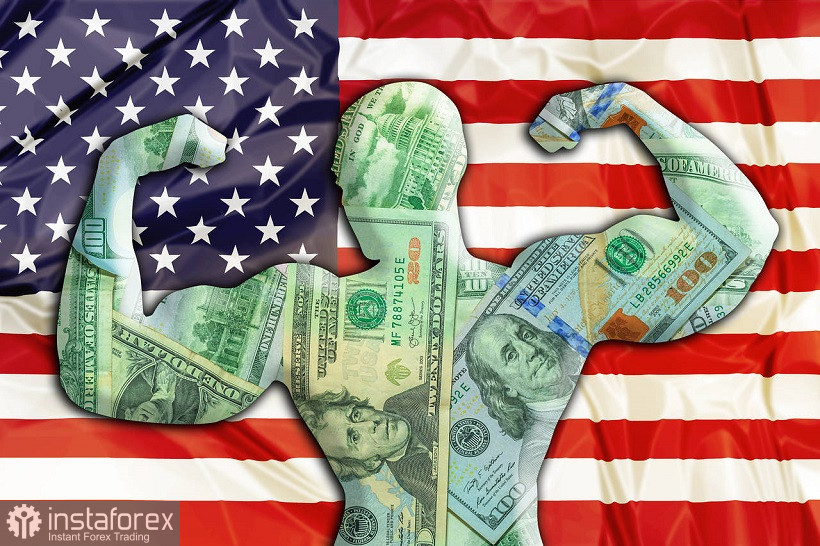During Friday's Asian session the EUR/USD pair renewed its another all-year low, dropping to 1.1436. In just two days the pair went down over 150 pips, reacting to the record US inflation rate, Treasury Secretary Janet Yellen's hawkish comments (that the Fed will not allow a recurrence of inflation in 1970s) and rumors that Lael Brainard will head the Fed next year
This fundamental aspect stimulated an exponential growth in the US dollar index, which jumped to 95.2 (it's all-time high since last July). Dollar pairs reacted accordingly. The greenback mostly gained ground. The EUR/USD pair demonstrated the same tendency. Moreover, the dovish comments of the ECB representatives amid the resignation of the last hawk Jens Weidmann exerted additional pressure on the pair. Bears consolidated within the 14th figure, as well as made attempts to conquer the 13th price level, judging by the strength of the downward movement. Bulls of EUR/USD can only count on the short-term correction hikes, which allow them to enter the sales at a reasonable price. Otherwise, the dollar after a long period of stagnation strengthened and managed to break the support level 1.1530, which was considered a reliable support level for almost five weeks. At the moment, the southern trend is at its height again.
The principal reason for the greenback's strengthening was the release of the US inflation rate data. Notably, traders did not react instantly: after a short-term growth immediately after the publication, the dollar was weak for some time, as if gaining momentum for another breakthrough. However, a few hours later, at the end of the US session on Wednesday, the greenback was in high demand. Apparently, market participants came to a logical conclusion that the Federal Reserve would not be able to maintain a wait-and-see attitude amid a record growth of key inflation indicators. Besides, the overall consumer price index accelerated to 6.2% y/y in October (with a growth forecast of 5.8%). The last time this indicator hit these highs was more than 30 years ago (in 1990). On a monthly basis, the index showed a similarly positive trend, rising to 0.9% (it is the second consecutive month of growth). The core index, excluding volatile food and energy prices, surged considerably. It rose by 4.6% year on year. This is the most promising result since August 1991.
Moreover, October inflation surpassed even the exaggerated expectations. Despite previous Fed forecasts, the consumer price index tends not to slow down. Therefore, the market participants became rather suspicious of Powell's statements. Jerome Powell stands his ground that rising inflation is temporary. Therefore, the regulator does not need to end this growth by tightening monetary policy. At the end of the November FOMC meeting he quashed rumors that the Central Bank was going to start tightening monetary policy in the middle of next year. However, amid the latest releases (both in the field of inflation and the US labor market) traders questioned Powell's words. Market participants mostly hold the view that the US regulator will have to take appropriate hawkish measures. Moreover, a number of Fed representatives adopt a more hawkish position than Powell.
Lael Brainard, a candidate for the US Federal Reserve chief, is among them. Notably, next February, the four-year term of Jerome Powell, who took office in 2017, will expire. The US key personnel appointment is the continuing unresolved issue. US President Joe Biden has been promising for weeks that he is about to decide on a candidate who must be later
approved in the US Congress. Initially, the option for Powell's second term was almost beyond doubt. However, at the end of October, the US press published the information that the current Fed chairman had sold the stocks from his personal account on October 1 last year, that is just several days before the minutes of the Fed September meeting were published. Despite no claims or accusations of illegal insider trading being made (however, there was increased criticism from Democrats), the probability of his reappointment dropped from 90% to 65%. Besides, since then Lael Brainard's stock has risen considerably, especially since she is a member of the Democratic Party (while Powell is a Republican).
According to Bloomberg, last week Brainard visited the White House, where she was successfully interviewed for the Fed Chairman post. The Washington Post also mentions high chances of her appointment. According to journalists, the US president will make the appropriate decision before Thanksgiving Day, that is before November 25. Rumors that Brainard, who holds more hawkish views, may become the Fed head, provide additional support to the dollar.
However, the main driver of the EUR/USD decline is still the ECB and Fed divergence, which is obvious. This fundamental aspect will further complicate any attempts of buyers to organize a large-scale correction. Trend reversal is unlikely. Therefore, it is advisable to use any corrective rebounds to open short positions. The first (and so far the main) target for the downward movement is a round and psychologically significant level 1.1400.
From the technical point of view, the pair on all higher time frames (from H4 and above) is either between the middle and bottom lines of the Bollinger Bands indicator, or below the bottom line of this indicator, which shows the priority of the south direction. On the timeframes from D1 and W1 the Ichimoku indicator formed a bearish signal "Parade of lines", which also indicates a bearish sentiment. However, it is highly significant that by approaching 1.1400, the pair may slow down and start a correction.






















